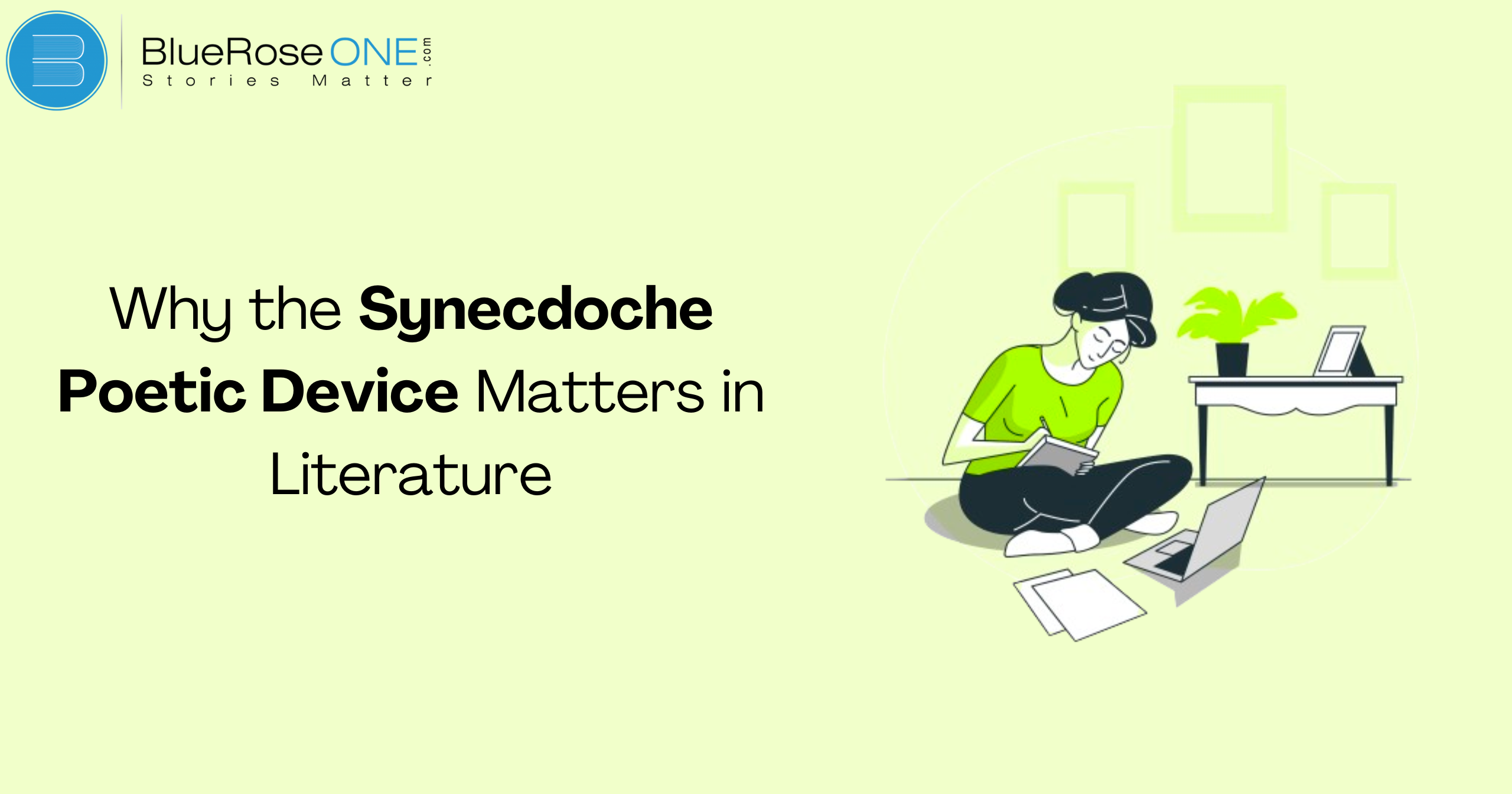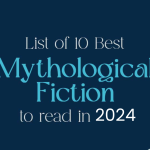Although the phrase “synecdoche” may seem complicated, it’s actually one of the most powerful poetic tropes in literature. Synecdoche poetic device is used when you hear expressions like “the crown” or “all hands on deck” that allude to royalty. This gadget is an essential tool that enhances our language and broadens our comprehension of books, not merely a fancy term used by literary critics. We’ll explore the importance of synecdoche in literature in this essay, as well as how it improves writing and reading.
You may also like: List of Nobel Prize Winners in India (Updated)
Understanding Synecdoche
Definition of Synecdoche
Within the genre of literary devices, the synecdoche poetic device is a powerful instrument that authors can use to communicate intricate concepts with subtle simplicity. Originating from the Greek term “synecdoche,” which signifies “simultaneous understanding,” synecdoche is employing a segment to synecdoche the entirety, or the other way around.
This poetic device goes beyond simple language decoration; it condenses complex ideas into succinct sentences, arousing strong visuals and encouraging closer ties between the reader and the text.
By using synecdoche, authors can condense intense feelings, social dynamics, and philosophical ideas into a single, powerful expression, enhancing the resonance and texture of their writing.
Etymology and Origin
The “Synecdoche Poetic Device” is an effective literary device with roots in classical rhetoric. Its origin, from the Greek words “synecdoche,” which means “simultaneous understanding,” emphasises its fundamental idea of representing the complete by employing a part, or vice versa.
By distilling difficult concepts into succinct sentences and encouraging readers to explore more subtle interpretations, this figure of speech enhances writing.
Knowing its history reveals its importance in literary analysis and shows how writers and poets use language to elicit strong feelings and insightful observations. Understanding synecdoche’s nuances improves our capacity to write poetry and prose that resonates as well as our admiration of literature.
You may also like: Top 10 Historical Fiction Books to Read in 2024
Types of Synecdoche
Part for the Whole
The “Synecdoche Poetic Device” has a lot of meaning in literature, especially when we examine its several forms. An example of this kind is the “Part for the Whole.” This effective literary device references only a small portion of a larger idea, yet it effectively conveys its core.
For example, when we say “all hands on deck,” we mean the involvement of every member of the crew, not just the hands. By skillfully utilising language, authors can arouse strong feelings in readers and concisely and precisely communicate intricate concepts, leaving a lasting impression.
Literary works have a richer texture due to the careful use of synecdoche, which makes them more memorable and intriguing.
Whole for the Part
“Whole for the Part” is a potent example of a synecdoche poetic device, which uses a single depiction to capture the core of a broader idea. When a piece in literature represents the fullness of a larger topic or idea, it amplifies the significance of that particular element.
For example, when a writer uses the word “wheels” to refer to an automobile or the word “sails” to allude to a ship, they conjure up a clear picture while also gently implying the larger context.
By capturing readers’ imaginations and encouraging more in-depth contemplation on the connections between the text’s aspects, this strategy enhances the story. A deeper understanding of “Whole for the Part” in the context of the synecdoche poetic device opens up new avenues for literary interpretation and appreciation.
You may also like: List of Top 10 Nikita Singh Books of All Time
Specific for the General
The synecdoche poetic device is a potent instrument that writers can use to effectively and deeply portray intricate thoughts amidst the diverse array of literary tactics. Of all its incarnations, “Specific for the General” stands out as a powerful example of this method.
It basically entails using a specific feature or component to stand in for the entirety of an idea or thing. This approach develops a stronger bond between the reader and the text, in addition to adding levels of significance.
When used deftly, the Synecdoche Poetic Device enhances both poetry and prose, leaving a lasting impression on the reader’s imagination.
General for the Specific
The “Synecdoche Poetic Device” stands out as a creative gem among the complex tapestry of literary devices because it has the ability to elevate a small portion into the embodiment of the entire. One of its many variations is “General for the Specific,” in which a single element represents a broader category.
This subtle technique invites readers to delve deeper into the rich depths of language by adding layers of meaning to both poetry and prose.
Through the use of synecdoche, authors are able to reveal the remarkable by transcending the commonplace and evoking strong feelings and vivid imagery. By breaking down the synecdoche, we can see the deep significance of this literary device and the complex connections that connect language and imagination.
You may also like: Famous Science Fiction Books to read in 2024
Synecdoche vs. Metonymy
Definitions and Differences
Within the complex world of literary devices, metonymy and synecdoche are two particularly interesting techniques that enhance language quality and add depth to textual meaning. But it’s important to distinguish between these two closely related ideas.
A potent poetic method called synecdoche works by using a part to represent the whole, or the other way around. This method gives writing a strong symbolic resonance and enables writers to condense larger concepts into little sentences.
To fully appreciate synecdoche’s great influence on literature, where each word has weight and significance, one must grasp its subtleties.
Examples to Illustrate
Recognising the differences between metonymy and synecdoche is essential to comprehending the subtleties of literary methods. A key component of poetic expression, synecdoche enhances the richness of literary works in a profound way.
By using a particular part to symbolise the entire, or vice versa, writers can enhance the impact of their poetry or prose by using synecdoche. Shakespeare’s “All the world’s a stage,” for example, uses the word “stage” as a synecdoche to refer to every aspect of human existence.
Likewise, in T.S. Eliot’s “The Waste Land,” the sentence “London Bridge is falling down” turns into a synecdoche for the downfall of society. These illustrations clearly show how effective the poetic device of synecdoche is at expressing deep topics and images in literature.
You may also like: Top 10 ELF Name Generators for Fantasy Writers
Historical Usage of Synecdoche
Classical Literature
The Synecdoche Poetic Device has left a lasting impression on classical literature by delicately modifying storylines and improving poetic depth.
Synecdoche is a literary device that writers have used to conjure vivid images and express significant themes, from Homer’s epic descriptions to Shakespeare’s soliloquies. Its enduring significance in the complex tapestry of literature is highlighted by its historical usage.
Renaissance Poetry
The Synecdoche Poetic Device flourished in Renaissance poetry as a means of complex expression. Poets such as William Shakespeare and John Donne skillfully used it, representing the whole through the use of parts or vice versa. This technique enhanced the imagery’s richness and the lines’ depth of meaning, adding to the era’s literary environment.
Modern Literature
The synecdoche poetic device is still relevant today, as seen by the diversity of voices and literary styles found in contemporary writing. By skillfully utilising this literary device, authors are able to encapsulate the essence of more expansive ideas in the subtle nuances of day-to-day existence, strengthening the bond between readers and the imaginary worlds they create.
Famous Examples of Synecdoche
William Shakespeare: Shakespeare was a master of synecdoche. “Friends, Romans, countrymen, lend me your ears,” he writes in “Julius Caesar,” utilizing the word “ears” to denote attention.
Emily Dickinson: Synecdoche is a common poetic device used by Dickinson. One example is the line “The soul selects her own society,” in which the word “soul” refers to an individual.
F. Scott Fitzgerald: In Fitzgerald’s “The Great Gatsby,” reference is made to “the eyes of Doctor T.J. Eckleburg,” which stand in for the pervasiveness of social judgment.
You may aloso like: DIY Book Cover Design: A Self-Publishing Author’s Guide
Synecdoche in Everyday Language
Common Phrases
The Synecdoche Poetic Device is a highly significant literary device that’s used to elicit vivid pictures and concisely explain complex thoughts. Words like “wheels turning” and “all hands on deck” are common examples of how this approach cleverly conveys more complex ideas in brief yet powerful sentences.
Cultural References
The synecdoche poetic device illuminates the subtle levels inside everyday sentences, providing light on the complex tapestry of language. The phrases “all hands on deck” and “suits in the boardroom,” which are cultural allusions, perfectly capture the idea of synecdoche, which is the literary device where a component reflects the total and infuses vivid imagery into literary settings.
Impact on Readers
Engagement and Relatability
The synecdoche poetic device is a powerful literary device that can increase reader engagement and relatability. Writers weave a dynamic interaction between well-known aspects and more expansive concepts by employing a part to represent the whole or vice versa, icebringing readers further into the story.
Cognitive Effects
The synecdoche poetic device in literature has a significant impact on readers’ cognitive abilities. Deeper understanding and connection are fostered by enhancing imagery and symbolism by employing a component to symbolise the whole, or vice versa. The device’s crucial function in literary expression is highlighted by the complex emotions and thought-provoking questions writers arouse through this linguistic multiplication.
You may also like: Top Digital Transformation Trends in Self-Publishing for 2024
Writing Techniques Using Synecdoche
Creating Metaphors
When it comes to literary technique, learning how to make metaphors is like learning how to paint with a brush on an imaginary canvas. By employing the poetic device of synecdoche, authors create complex narratives in which a single element represents the entire, allowing readers to decipher deeper levels of meaning.
Developing Themes
A subtle art in writing is “developing themes” through the use of the synecdoche poetic device. By employing a portion to symbolise the entire, this strategy enables authors to communicate complicated concepts while enhancing thematic resonance. With deft use, writers may create stories that are profoundly meaningful and full of depth, connecting with readers on many levels.
Enhancing Descriptions
Understanding the synecdoche literary device will help you write descriptions in literature that are beyond compare. Writers can add depth and resonance to narratives by using this technique to distil large notions into smaller parts. Synecdoche improves comprehension and emotional impact by asking readers to view the whole through its components.
You may also like: Footnote vs. Endnote: What’s the difference and when to use each?
The Role of Synecdoche in Modern Media
Film and Television
The synecdoche literary device flourishes in film and television, delicately influencing storylines and character arcs. Whether it’s a single item signifying a character’s journey or a microcosm illustrating a more significant social issue, synecdoche enhances the storytelling experience by adding nuance and complexity.
Advertising
The synecdoche poetic device proves to be an effective technique in the advertising industry, distilling intricate storylines into succinct symbols. Brands use it intentionally to evoke associations and feelings by employing a part to symbolise the whole. From Nike’s swoosh to Apple’s famous bitten fruit, these emblems have a strong emotional impact on people and create enduring memories for them.
Final Thoughts
Synecdoche is a potent device that gives writing depth and vitality; it is more than just a stylistic flourish. Writers can produce writings that are richer, more captivating, and resonate on several levels by employing a component to symbolise the whole. Whether used in literature, poetry, or common conversation, synecdoche improves communication and broadens our understanding of the world.
Frequently Asked Questions
An example is in William Shakespeare’s “Julius Caesar”: “Friends, Romans, countrymen, lend me your ears,” where “ears” represent attention.
Synecdoche uses a part to represent the whole or vice versa, while a metaphor makes a direct comparison between two unrelated things.
Yes, it’s commonly used in phrases like “new set of wheels” (car) or “all hands on deck” (crew members).
It enhances imagery, creates symbolism, and evokes emotions, making the poem more impactful and layered.
Common mistakes include misinterpretation by the reader and overuse, which can make the writing seem forced or complex.
















